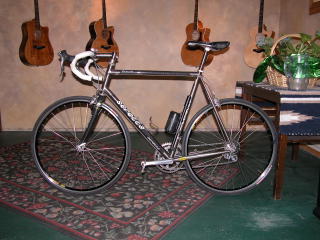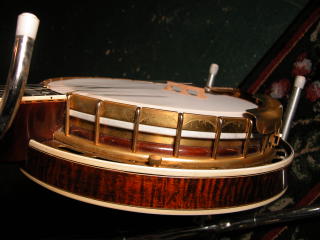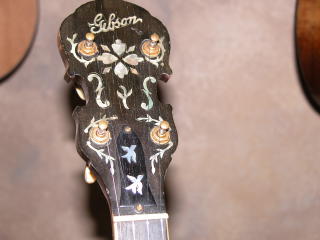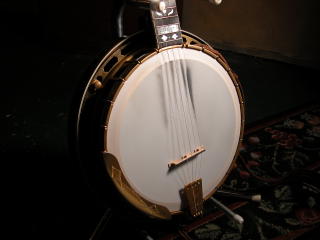
Let's talk about bikes some, after all bikes are in the title of this blog. That's my bike up there and I took the photo in my guitar shop. Its a Serotta Ottrott, an unobtainium/carbon/kryptonite uber bike. I sold three other uber bikes to get it. I have been riding high end bikes since 1970. This one defines the high end. I ride over three thousand miles per year typically and up to six thousand on a good year. That's a lot of miles to a civilian but not much to a bad-ass racer type. Those guys will ride six at a minimum for a local licensed racer and Lance rides 22,000. Dude. Well, remember that the pros only have riding, training, and recovery to do so that's what you get. I believe most European pros ride in the 16,000 to 20,000 mile range. Oof.
I enjoy following the European racing scene, which pretty much opts me out of any meaningful cocktail party conversation or small talk with the guys. I can't fake even a cursory chat about any major league sport team or game, but if anyone ever wants my opinion of whether or not Eric Zabel should have ridden in the 2005 tour, I'm ready.
I have ridden probably close to 100,000 miles in my pseudo cycling career. I have broken my hip, leg, arm, and elbow. Other injuries too minor to mention have come and gone. Now I am a squishy middle aged white guy with a pricey bike who just likes to get out and spin. I used to ride with the feared Flanders Brother's Minneapolis Bicycle Racing Club team. My company sponsored the team during the good times. I can still hang with the Saturday morning coffee rides which are social and easy.
The past three years, prior to this summer, were awful bike seasons for me. My business was failing, my marriage was failing, and things just weren't going my way. I gained a lot of stress fat and lost fitness. When I did ride, I could not recover and therefore lost my only stress relieving activity. It sucked. Now, most of the stress has passed and this year I had a pretty good summer. I lost a lot of weight and regained fitness.
In August, on my first ride after taking ten days off with a broken arm (yes-cycling related), the Flanders/MBRC Tuesday ride overtook me. I sprinted hard to catch them as the dozen guys sped by in single file and I managed to get on the back of the pace line. My heart rate was pretty high by that time. I tucked in and hung on but I couldn't get my heart rate down. I looked at my computer and noticed we were going 30 miles per hour. Then I knew why my heart rate wasn't coming down. The Tuesday ride is the "fast ride", and I am here to tell you that thirty miles per hour is seriously fast on a bicycle on the flats. Its like, pro fast; euro fast; freakin' fast. I knew because my heart rate was high and staying high that I was only going to be there a little while. After a bit, there was a climb and I exploded off the back. It was twenty minutes before my heart rate and breathing were normal. Its nice to know that those guys are keeping fit and not just out fooling everybody by looking fast but not going hard. A couple of days later I noticed a bump in my fitness from that brief interval. I love those guys.







